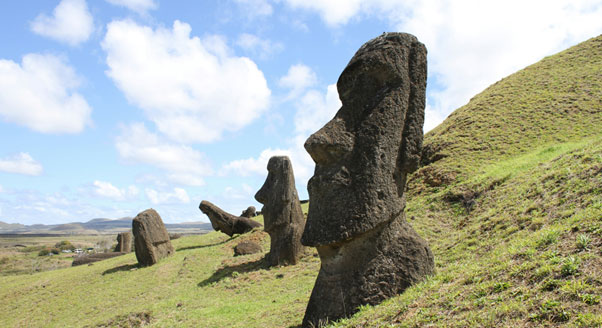
COPENHAGEN, DENMARK—Cosmos Magazine reports that a new genetic study suggests that the Rapa Nui of Easter Island had contact with the peoples of South America and maintained a stable population before Europeans reached the remote island in the Pacific Ocean in 1722. The DNA samples in the study were obtained from 15 Rapa Nui individuals who lived between 1670 and 1950, and whose remains are currently held in France at the Museum of Mankind. “We looked into how the Indigenous American DNA was distributed across the Polynesian genetic background of the Rapa Nui,” said Víctor Moreno-Mayar of the University of Copenhagen. “This distribution is consistent with a contact occurring between the thirteenth and fifteenth centuries,” he said. The researchers were not able to determine where this contact occurred, however. The study did not find any evidence of a dramatic population decline, as would be expected if the Rapa Nui population had collapsed due to environmental catastrophe. “This genetic result seems consistent with the wealth of hard evidence provided by other fields for debunking the collapse theory,” Moreno-Mayar concluded. The scientists are now discussing repatriation of the remains in the study with the modern Rapa Nui community. Read the original scholarly article about this research in Nature. To read about the ancient agricultural productivity of Easter Island, go to "Around the World: Chile."